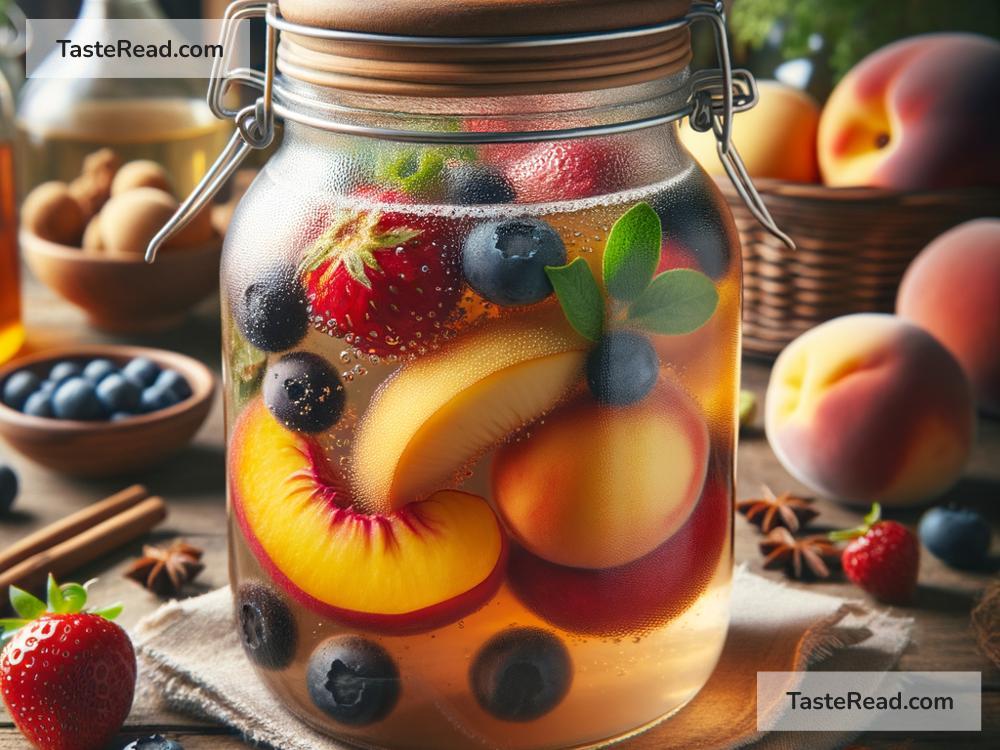How Fruit Fermentation Creates Unique Flavors
Have you ever wondered how some of your favorite beverages or foods get their distinctive flavors? That spark of tanginess in kombucha, the depth of flavor in wine, or even the complexity in sourdough bread all have something in common: fermentation! This age-old process doesn’t just preserve your food or drink—it creates astonishingly unique flavors, especially with fruits. Let’s explore how fruit fermentation transforms simple, fresh produce into flavor-packed wonders.
What Is Fermentation?
Fermentation might sound like something straight out of a chemistry lab, but it’s a natural process that’s been around for thousands of years. It happens when microorganisms like yeast or bacteria break down sugars in food, converting them into alcohol, acids, or gases. This process gives fermented foods their unique taste and texture.
In the case of fruits, the sugars in them are the perfect “fuel” for fermentation. When yeast or bacteria feed on these sugars, they trigger a chemical reaction that transforms fruit into a new creation entirely. Think about how grapes become wine or apples become cider—the transformation happens through fermentation.
The Role of Fruit in Fermentation
Fruits are packed with natural sugars, vitamins, and minerals, making them ideal candidates for fermentation. But it’s not just about the ingredients—it’s about nature’s handiwork in crafting flavors. During fermentation, the fruit’s natural compounds interact with yeast or bacteria, creating entirely new flavor profiles that range from sweet to tangy, fruity to earthy, and bold to subtle. Here’s how it works:
-
Natural Sugars Fuel the Process
Fruits like grapes, apples, and berries are rich in sugars. During fermentation, yeast consumes these sugars and produces alcohol as a byproduct. For example, when you ferment grapes, they transform into wine; the yeast metabolizes the grape sugars into ethanol, giving wine its alcoholic content, and also adds unique flavor notes depending on the type of grape. -
Acids Create Tangy Notes
Sometimes fermentation produces acids, such as lactic acid or acetic acid. These acids develop sharp, tangy flavors. In drinks like kombucha, fruit juices are often added during the process to bring sweetness as well as deeper layers of flavor when the acids mix with fruit compounds. -
Aromatic Compounds Are Enhanced
Fruits have natural compounds, like esters and phenols, that give them their characteristic aromas. Fermentation amplifies these aromas, turning simple fruit into something much more complex. For instance, fermented cherries can take on earthy, spicy notes, while fermented tropical fruits like mangoes can become intensely sweet and aromatic.
The Science of Flavor Development
What truly makes fermented fruit unique is how the process changes its chemical makeup. The microorganisms involved in fermentation don’t just eat the sugar—they also produce enzymes and metabolites that react with the fruit’s natural compounds. This interaction results in a fusion of new flavors that weren’t present in the original fruit.
Take wine as an example. Grapes contain hundreds of different compounds, and as they ferment, the yeast interacts with these compounds to create hundreds more. You might taste hints of berries, vanilla, or even pepper—all of which come from the chemical reactions occurring during fermentation. The longer fermentation lasts, the more complex the flavor becomes.
Ways to Ferment Fruit at Home
Fermenting fruit isn’t just for professionals—it’s a surprisingly simple process you can do in your own kitchen! Here are a few ideas to try:
-
Homemade Fruit Wines or Ciders
Start with fresh fruits like grapes, apples, or pears. Crush them to release the juice, and add a bit of yeast to kick-start the fermentation. Over days or weeks, the sugar will turn into alcohol, creating your own homemade wine or cider. -
Fermented Fruit Preserves
Turn fruits like berries, peaches, or plums into tangy, probiotic-packed preserves. Combine fruit, sugar, and a pinch of salt in a jar, then let the natural wild yeast in the environment do the work. In just a few days, you’ll have a unique, fermented jam. -
Fruit-Infused Kombucha
If you’re already brewing kombucha at home, add fruits like strawberries, ginger, or pineapple during the second fermentation process. The fruit will ferment with the tea base, creating bold and fruity flavors. -
Fermented Smoothies
Add probiotics like kefir or yogurt to fresh fruit smoothies, then leave them out for several hours to ferment. You’ll end up with creamy, tangy smoothies packed with flavor and good-for-your-gut bacteria.
Why Try Fermented Fruit?
Fermented fruit isn’t just delicious—it’s good for you, too! The fermentation process often increases the nutritional value of fruit by introducing probiotics, which support gut health and digestion. Additionally, fermentation can prolong the shelf life of fruit and reduce food waste. And let’s not forget the magic of unique flavors that emerge—you won’t find this complexity in fresh fruit alone.
Final Thoughts
Fruit fermentation is one of nature’s cool tricks that transforms the ordinary into the extraordinary. By allowing yeast and bacteria to interact with the sugars and compounds in fruits, we get bold flavors, nutritious benefits, and plenty of creative possibilities. Whether it’s sipping a glass of wine, enjoying a spoonful of fermented preserves, or making your own batches at home, the world of fermented fruit is worth exploring.
Next time you grab a piece of fruit, imagine the endless possibilities hidden inside those natural sugars—and maybe give fermentation a try. Who knows? You might discover your next favorite flavor!


